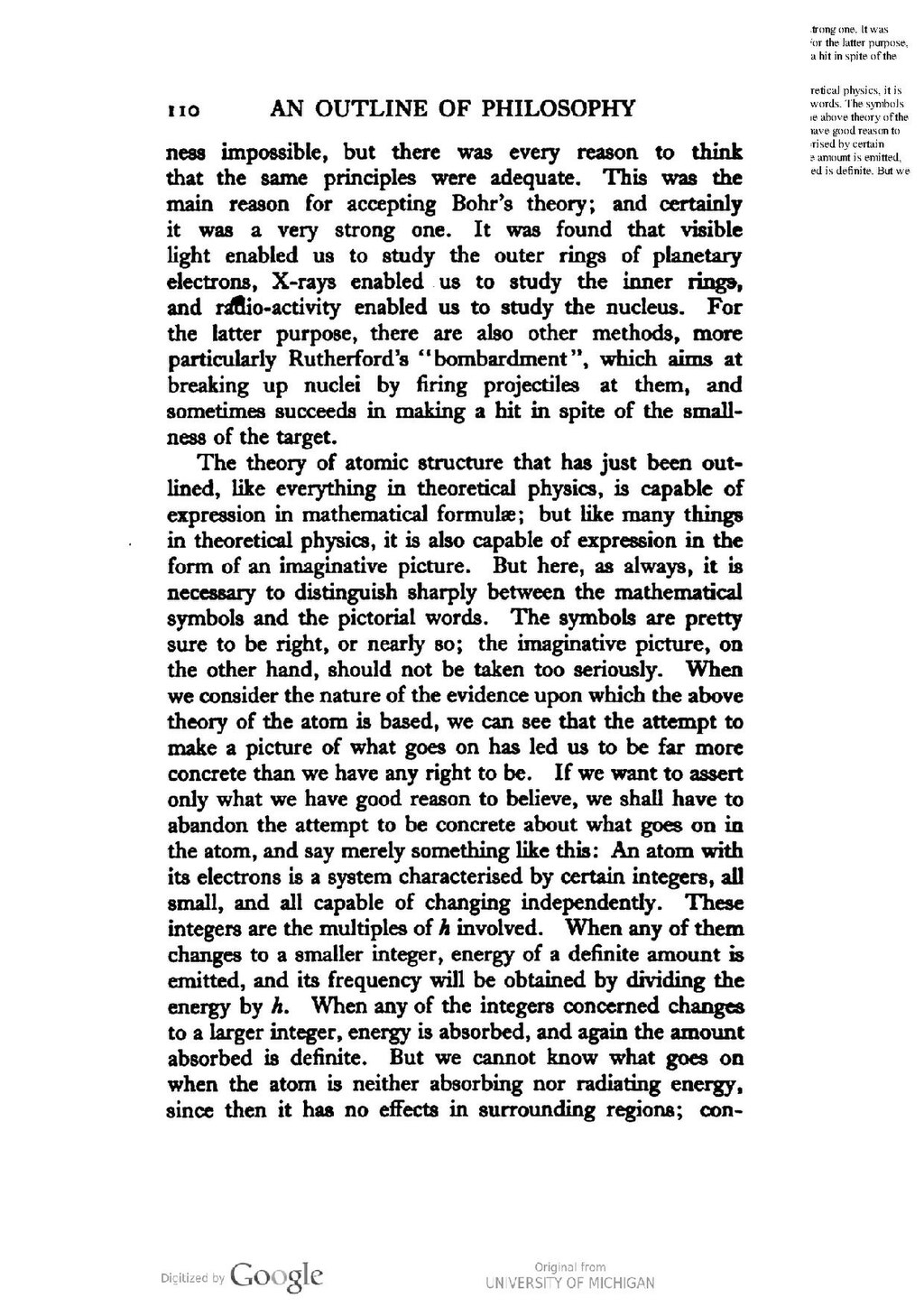ness impossible, but there was every reason to think that the same principles were adequate. This was the main reason for accepting Bohr's theory; and certainly it was a very strong one. It was found that visible light enabled us to study the outer rings of planetary electrons, X-rays enabled us to study the inner rings, and radio-activity enabled us to study the nucleus. For the latter purpose, there are also other methods, more particularly Rutherford's "bombardment", which aims at breaking up nuclei by firing projectiles at them, and sometimes succeeds in making a hit in spite of the smallness of the target.
The theory of atomic structure that has just been out lined, like everything in theoretical physics, is capable of expression in mathematical formulæ; but like many things in theoretical physics, it is also capable of expression in the form of an imaginative picture. But here, as always, it is necessary to distinguish sharply between the mathematical symbols and the pictorial words. The symbols are pretty sure to be right, or nearly so; the imaginative picture, on the other hand, should not be taken too seriously. When we consider the nature of the evidence upon which the above theory of the atom is based, we can see that the attempt to make a picture of what goes on has led us to be far more concrete than we have any right to be. If we want to assert only what we have good reason to believe, we shall have to abandon the attempt to be concrete about what goes on in the atom, and say merely something like this: An atom with its electrons is a system characterised by certain integers, all small, and all capable of changing independently. These integers are the multiples of h involved. When any of them changes to a smaller integer, energy of a definite amount is emitted, and its frequency will be obtained by dividing the energy by h. When any of the integers concerned changes to a larger integer, energy is absorbed, and again the amount absorbed is definite. But we cannot know what goes on when the atom is neither absorbing nor radiating energy, since then it has no effects in surrounding regions; con-
